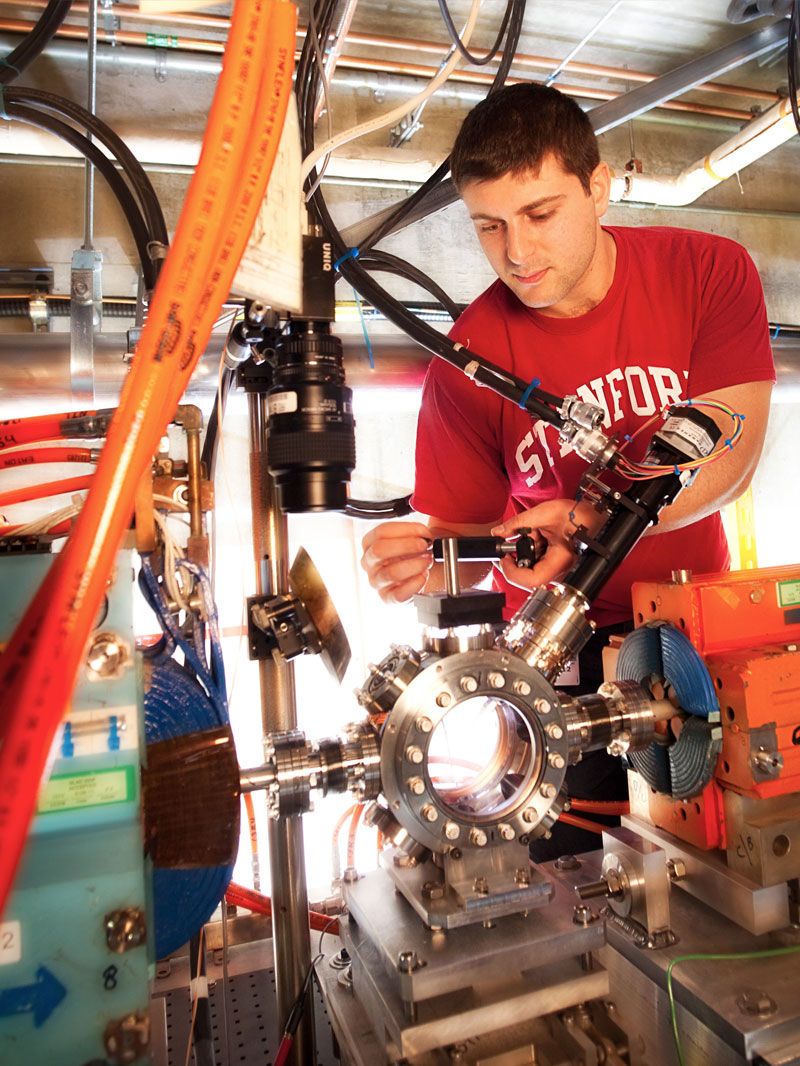Research
Research at Stanford
Stanford research is remarkable in both its breadth and depth. Stanford research programs reflect the expertise, creativity and initiative of the faculty who set the research agenda. Stanford faculty have a long tradition of engaging with their colleagues and students within Stanford's seven schools and working across disciplines.
There are more than 5,500 externally sponsored projects throughout the university, with the total budget for sponsored projects at $1.22 billion during 2015-16, including the SLAC National Accelerator Laboratory (SLAC). Of these projects, the federal government sponsors approximately 81 percent, including SLAC. In addition, nearly $260 million in support comes from non-federal funding sources.
National research programs with centers at Stanford:
- Departments of Plant Biology and Global Ecology of the Carnegie Institution for Science
- National Bureau of Economic Research
Independent Laboratories, Centers and Institutes
Stanford has 18 independent laboratories, centers and institutes that provide a physical and intellectual intersection between schools and disciplines. These institutes are in line with Stanford's longstanding tradition of crossing boundaries to tackle large problems, engaging faculty and their students in collaborations that range from international and economic studies to challenges facing the environment, energy and health. [Complete list of research centers]
Physical Sciences
- Geballe Laboratory for Advanced Materials (GLAM), conducting research jointly with SLAC
- E. L. Ginzton Laboratory
- W. W. Hansen Experimental Physics Laboratory (HEPL)
- Kavli Institute for Particle Astrophysics and Cosmology (KIPAC), operated jointly with SLAC
- PULSE Institute for Ultrafast Energy Science, operated jointly with SLAC
- Stanford Institute for Materials and Energy Sciences (SIMES), operated jointly with SLAC
Environmental Sciences
- Precourt Institute for Energy
- Stanford Woods Institute for the Environment
Humanities and Social Sciences
- Freeman Spogli Institute for International Studies at Stanford (FSI)
- Center for the Study of Language and Information (CSLI)
- Stanford Center on Longevity (SCL)
- Stanford Humanities Center (SHC)
- Stanford Institute for Economic Policy Research (SIEPR)
- Center for Advanced Study in the Behavioral Sciences (CASBS)
Biological and Life Sciences
- Spectrum, the Stanford Center for Clinical and Translational Research and Education
- Stanford Bio-X, the interdisciplinary program related to bioengineering, biosciences and biomedicine
- Stanford Chemistry, Engineering & Medicine for Human Health (ChEM-H)
- Stanford Neurosciences Institute
SLAC National Accelerator Laboratory
SLAC National Accelerator Laboratory is a U.S. Department of Energy national laboratory operated by Stanford. Research at SLAC addresses questions in materials and energy science, biology, chemistry, particle physics, astrophysics, cosmology, advanced accelerator development and other fields. Nearly 3,400 scientists worldwide use the lab’s facilities each year, and more than 1,000 scientific papers are published annually based on research at SLAC, earning Nobel prizes for six scientists.
Hoover Institution on War, Revolution and Peace
The Hoover Institution, devoted to the study of domestic and international affairs, was founded in 1919 by Herbert Hoover, a member of Stanford’s Pioneer Class of 1895 and the 31st U.S. president. One of the first “think tanks” in the United States, the institution has more than 100 resident scholars/specialists.
This page last modified Nov 30, 2015.

